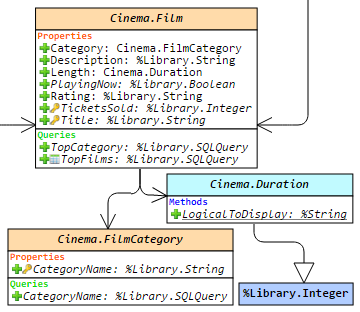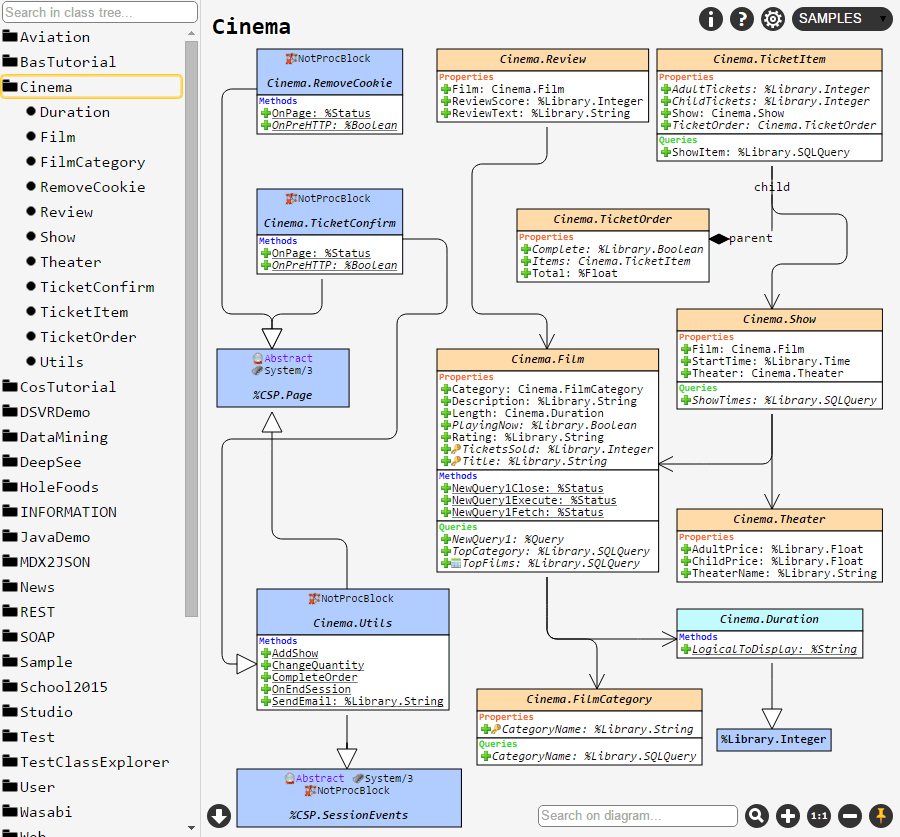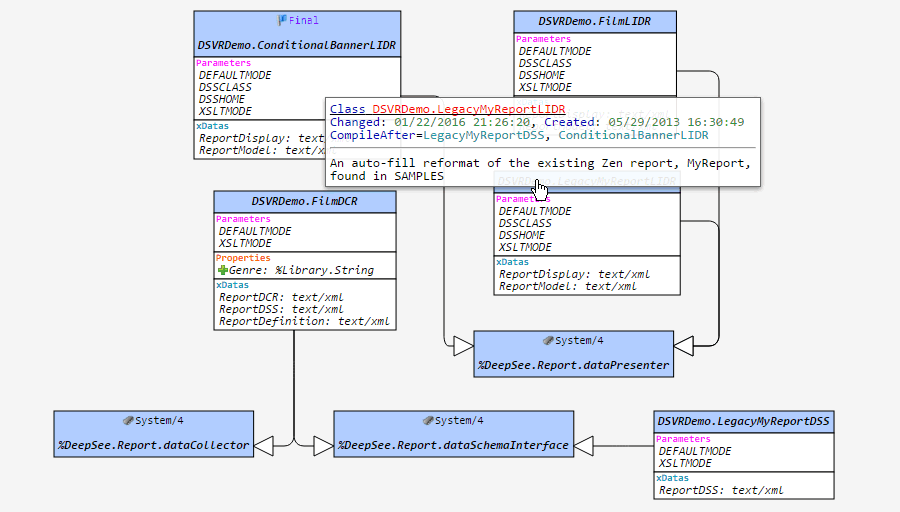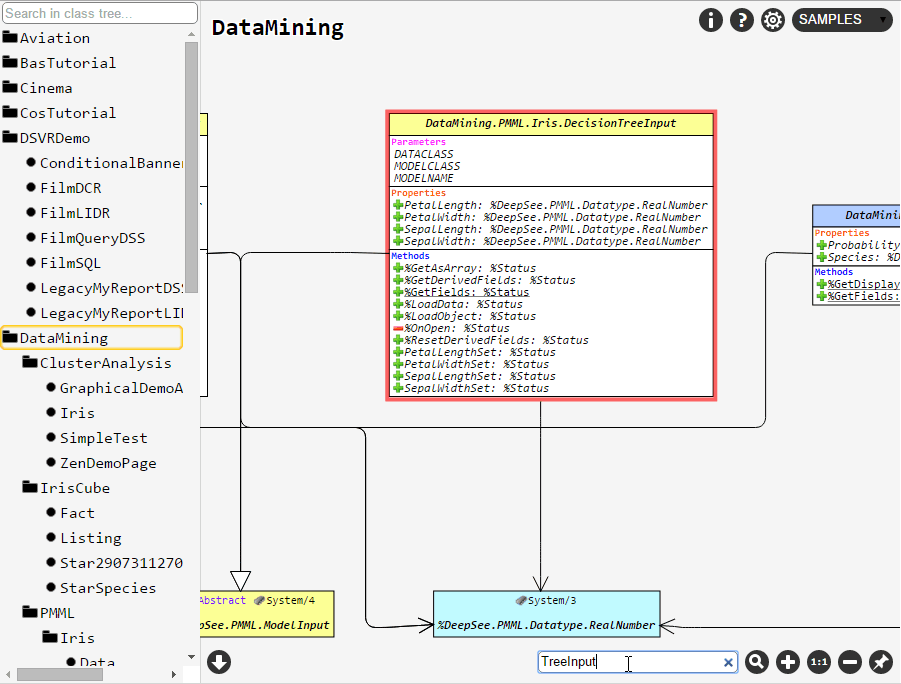GET Caché Class Explorer - Exploring Caché in UML Notation / InterSystems Blog / Sudo Null IT News FREE
 Howdy. This article is a short overview of a tool that helps you understand the device and data structure of packages and classes inside a Caché DBMS.
Howdy. This article is a short overview of a tool that helps you understand the device and data structure of packages and classes inside a Caché DBMS.
In short, his mission is to visualize a course or a whole package, show the connections 'tween classes and provide As much information as possible to a programmer operating theatre squad leader without the need to cristal to the Studio apartment and watch the program code there.
Those who meditate Oregon carry training on InterSystems technologies, spend years looking operating theater changing the codes of different projects and just interested parties - I ask for you to familiarize yourself with the Caché Class Explorer!
Introduction to Caché
Caché is a multimodel DBMS. It can be accessed using SQL queries with some extensions, as well as interacting with stored objects and procedures direct interfaces for individual programming languages. The thirdly pick is to now develop the application in the inbred DBMS linguistic process - Caché ObjectScript (COS).
Caché supports classes at the DBMS flush. There are two main types of classes: Persistent, which sack cost stored in the database, and Qualified, which are not stored in the database, but play programs and handlers. There are also a number of special types: Serial (classes that can be improved into Relentless classes to create complex information types, so much as addresses), DataType (make over a custom information character), Index, View and Flow.
And now about Class Explorer
Caché Class Explorer - a tool that visualizes the structure of Caché classes in a diagram, shows the dependencies 'tween classes and every the necessary information, including code of methods, queries, xData blocks, comments, documentation and keywords of various elements of the grade. Class Explorer uses a modified UML notation to video display, because Caché has a smorgasbord of entities that are not provided in the standard UML notation, but are important for Caché: queries, xData blocks, a pot of keywords for methods and properties (such as System , ZenMethod, Hidden, ProcedureBlock and others), parent-child, one-many relationships, class types, then on.
In order to get the most hi-fi understanding of what leave be discussed later, you should first regard what the displayed package looks wish, and at the equivalent time, the Class Explorer interface. For example, acquire the Cinema package from the SAMPLES namespace:

About functionality
In Caché Class Explorer (1.14.3) you stool:
- Expose a package hierarchy, course plot, or an stallion package;
- Redact the appearance of the chart subsequently displaying;
- Save up the current class plot image;
- Remember the circulating position of the diagram and restore it at the next display;
- Look for some keywords displayed on the diagram surgery in the class tree;
- Using tooltips, get complete selective information about classes, their properties, methods, parameters, queries and xData blocks;
- View program code for methods, queries, or xData blocks;
- Enable operating theater disable the showing of any chart elements, including graphic icons.
Inside information and features overview
On the left side of the practical application is a package corner. To draw the whole package, you need to click on the button connected the right side of the package name when you hover over it. To display a disunite class and all classes addicted happening it, you just need to select it in this tree.
Class Internet Explorer can exhibit several kinds of dependencies 'tween classes:
- Of course, inheritance. IT is displayed by a careworn white pointer in the direction of the inherited class;
- An "association", operating room relationship between classes. If the study of united of the classes contains the type of other class, such a relationship will be displayed connected the plot;
- Parent-Youngster and Unrivalled-Umteen relationships: information wholeness rules.
If you vibrate over a link, the class will highlight the fields that create this link. It is important to mention that Assort Explorer wish not "go deep" and draw the dependencies of those classes that are outside the current box, it will draw only one class. Information technology will "heighten" endlessly only into classes that are in the current computer software - if you need to bound information technology, use the "Dependency level" setting.
The social class itself is displayed as a rectangle divided into 6 sections:
- Class name: by hovering over the class public figure, you can find out when it was created and modified, see the comment and all the keywords appointed to IT. Clicking on the class claim testament open the documentation;
- Course of instruction parameters: all assigned parameters with their types, keywords and comments;
- Class properties, just similar with parameters. Inscriptions in italics have a tooltip;
- Methods: you can click on any method and see the source code of this method, the syntax wish be highlighted;
- Requests: likewise as methods - you can click on them and view the postulation encipher;
- xData blocks: blocks mainly containing information in XML. Clicking will display the formatted source code.
Away default, the class is displayed with many graphical icons, the interpretation of which you can see aside clicking on the Help button. If you need a approximately strict UML notation, and then their display, besides every bit the display of any sections of the class, can exist turned off in the settings.
If the chart is outsized enough and foreign, you can use the active search on the chart. A class that contains whatever partly of the entered keyword will be highlighted. To go to the class with the following match, fitting urge on Enter once again or the lookup button.
And finally, by editing the diagram, deleting all needless connections and placing the elements to achieve the desirable coming into court, it fundament be saved by clicking on the let down left button.
Installation
In order to set u Caché Class Explorer, you just need to meaning the latest unfreeze into any field. Afterward successful import, you should take over a web practical application hostname/ClassExplorer/(a slash at the end is necessary).
Detailed induction instructions
- Download the modish Caché Class IE archive
- Unzip the archive and extract the XML file Cache / CacheClassExplorer-vX.XXxml;
- Import the package into any area in one of the following ways:
- Drag the XML file to an open studio;
- Through the direction portal: System Browser -> Classes -> Importation, and specialize the track to the file;
- The command in the terminal: do ## class (% Installer.Installer) .InstallFromCommandLine ("path / Installer.cls.xml");
- Deal the import log - if everything is exquisitely, the web application wish be available at hostname / ClassExplorer /. If something went inopportune - show about it, and make sure that:
- You have enough rights to consequence the package into this area;
- The user of the web application has sufficient rights to blend in into various areas;
- If error 404 - that you put a stroke at the destruction of the address taproo.
And in the end - how it looks
Under the pillager - graphics
Tooltips:

Search by diagram:

View source code of methods:

View source code of xData blocks:

You can see how Class IE deeds in the SAMPLES / USER area: demo . There is also a small video review of the project. Any feedback, suggestions or comments are welcome - leave alone them in the corporate repository . Have a nice use!
DOWNLOAD HERE
GET Caché Class Explorer - Exploring Caché in UML Notation / InterSystems Blog / Sudo Null IT News FREE
Posted by: rollinsnowlielinuld81.blogspot.com
0 Response to "GET Caché Class Explorer - Exploring Caché in UML Notation / InterSystems Blog / Sudo Null IT News FREE"
Post a Comment